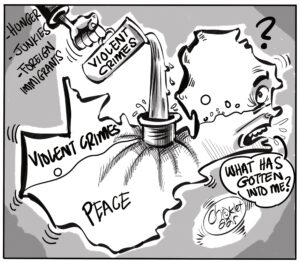Part One of these series highlighted the persistent legal, policy, and governance gaps that have hindered the Constituency Development Fund (CDF) from fulfilling its promise of decentralised, community-driven development. This piece builds on the issues highlighted in Part One of the series, proposing practical and actionable reforms needed to make the CDF truly accountable, transparent, and aligned with national and local priorities.
Reforming the Legal Foundation
The current CDF Act, in section 4, gives Members of Parliament (MPs) disproportionate influence over project selection, a role that should rest primarily with communities and local authorities- by allowing them sit on CDF Committees and nominate multiple members. This practice blurs the line between political representation and administrative decision-making. A reformed framework should redefine MPs’ role as one of oversight and advocacy, not direct administration. Community and sectoral representatives should instead be elected or independently nominated, with local authorities providing technical and financial management support.
Further, accountability should be strengthened by addressing both enforcement and grievance redress. While misappropriation of CDF funds is an offence under the Public Finance Management Act of 2018, the CDF Act lacks its own investigative or enforcement procedures tailored to unique challenges of constituency-level realities such as political interference or elite capture. At the same time, Section 30 limits appeal to the Minister, the same authority responsible for issuing guidelines, which undermines impartiality and denies citizens access to an independent forum. Hence, the law must be amended.
Embed CDF-specific investigative and sanctioning mechanisms within the Act, including mandatory reporting to oversight bodies such as the Anti-Corruption Commission. It should also establish an independent, locally accessible grievance process, whether through a constituency ombudsman, tribunal, or oversight board, as seen in Kenya’s NG-CDF model. Together, these reforms would close accountability gaps, ensure timely remedies, and restore community trust in the Fund’s governance.
Additionally, reporting and transparency should be held to the same standard as project invitations. While Section 23(2) of the CDF Act obliges local authorities to widely publicise calls for project proposals, no similar obligation exists for reporting on approved projects and expenditure. This creates a one-sided process where communities are engaged at the beginning but left in the dark thereafter. The law and accompanying guidelines should therefore extend these same outreach requirements to reporting, ensuring that project lists and financial reports are published and explained in accessible formats and local languages.
Forming a Coherent Policy Framework
CDF is currently governed by a “patchwork of guidelines, circulars, and policy documents”. This disjointed policy framework lacks a single, unified CDF policy that connects financing, planning, and monitoring with national development priorities. To address this, Zambia needs a comprehensive, multi-sectoral National CDF Policy, developed jointly by the Ministry of Local Government, the Ministry of Finance, and other key ministries. This policy should consolidate objectives, align planning procedures with the 8NDP, and standardise monitoring and reporting tools, closing the strategic gap left by the current siloed approach.
Across Africa, CDFs have faced similar governance dilemmas. Uganda, for example, abandoned its CDF altogether after accountability concerns proved insurmountable. Kenya’s NG-CDF, meanwhile, is firmly anchored in the national budget and enjoys strong legal backing, yet it still struggles with uneven planning and accountability because constituency projects are not tied to structured strategic plans.
This is where Zambia can chart a new path. Ward Development Plans (WDPs) are too fragmented, while Integrated Development Plans (IDPs) are too broad to capture constituency-specific needs. A Constituency Development Plan could provide the missing link, consolidating ward-level priorities, validating them with communities, and formally linking them to district IDPs and the 8NDP. By legislating CDPs as mandatory planning tools, Zambia could transform CDF allocations from scattered projects into coherent, budget-linked investments that respond to both local aspirations and national priorities.
Moving from Rhetoric to Reality in Citizen Engagement
Citizen engagement must move from rhetoric to reality. The policy should require regular ward-level consultations at both planning and completion stages, formal documentation of community input, and public disclosure of outcomes. This should go hand-in-hand with transparency rules requiring the publication of approved projects, budgets, and expenditure reports in accessible formats, on community platforms like noticeboards and radio. Furthermore, social audits should become a standard part of the CDF cycle, ensuring citizens can track promises against delivery.
The CDF has strong public support. But popularity alone will not deliver results. The reforms outlined- clear legal mandates, enforceable inclusion targets, coherent policy frameworks, transparent reporting, and participatory governance- are all within reach. What remains is the political will to act and restore the CDF’s promise of truly decentralised, community-driven development.
About the Author:
Lucy P. Musonda is an Advocate of the High Court of Zambia (AHCZ). She currently serves as a Legal Researcher at the Centre for Trade Policy and Development. She holds an LLB from the University of Zambia and is currently pursuing an MBA at Heriot-Watt University, Edinburgh Business School, as well as a Master of Laws (LLM) in Taxation and Investment Law at ZCAS University.
























